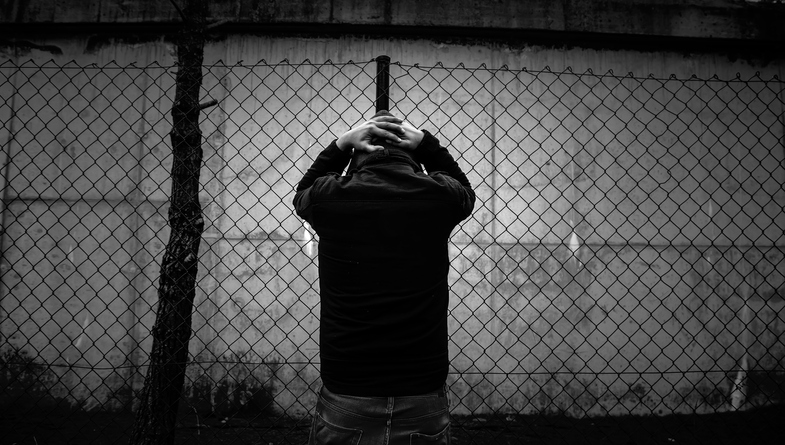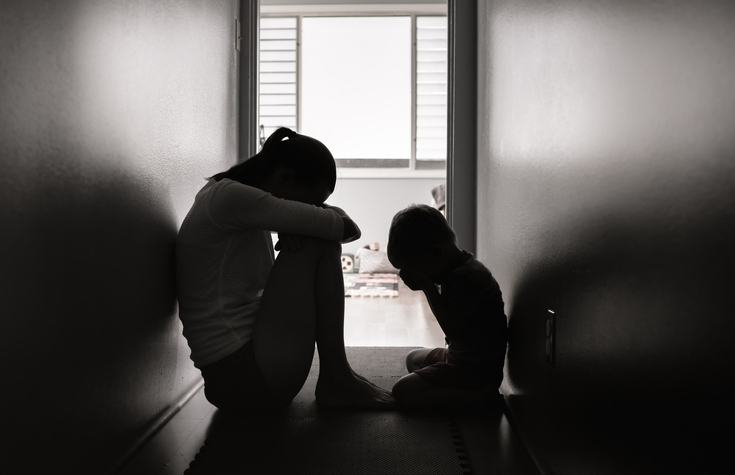Child
Online Exploitation
What is Child Online Exploitation?
The ways in which a child can be exploited online are vast, and the means and extent to which this is happening is rapidly increasing.
There are, however many ways to protect children from these risks, but it is essential for everyone who lives with, supports or works with children to actively engage in their online activities, set appropriate boundaries, educate them about online safety, and encourage open communication.
Using parental controls, privacy settings, and monitoring tools can help create a safer online environment for children; exploring the risks, preventions and ways to address issues as soon as they arise will keep a child safe from further harm.
Any child, of any age is at risk of online exploitation.
The below video helpfully frames how the use of technology should be viewed and the risks faced by children:
Ways in which a child can be exploited online
Children that are most at risk of 'offline' exploitation are also the most at risk of 'online' exploitation.
The ways in which a child can be harmed and exploited online can include:
- Identity theft: to create fake profiles, make fraudulent transactions, or commit other crimes (sometimes without their knowledge of the crime)
- Cyber bullying and harassment: to intimidate or humiliate using digital platforms, which can sometimes escalate to threats and explicit content sharing
- Sexting: communication between individuals that involves sexual content. This can be through text messages, images or videos. Visit Childline for more information here
- Sextortion: a form of blackmail. It involves threatening to publish sexual information, photos or videos about someone. This may be to extort money or to force the victim to do something against their will. Visit Metropolitan Police website for more information here
- Online grooming: perpetrators may establish relationships with children online with the intent of exploiting them sexually and/or criminally. Perpetrators often manipulate and deceive children to gain their trust before engaging in exploitative activity.
- Child sexual abuse material (CSAM): the creation, distribution, or possession of explicit images or videos involving children. As well as the creation of Deep Fake images/videos of CSAM material. Read more here. Deepfake images to be made a criminal offense. Read more here
- Sex trafficking: forcing or coercing children into sexual activities through online platforms, often involving human trafficking.
- Online scams: phishing, fraudulent websites, or deceptive online schemes. Scammers may exploit a child's lack of experience to trick them into sharing personal or financial information.
- Online challenges: viral stories, hoaxes, or digital ghost stories can appear online through social media or other online platforms. The ‘challenges’ themselves can vary but often encourage individuals to harm themselves, others, or property in the real world.
- Privacy violations: children may unknowingly share sensitive information online, such as their location, school details, or personal habits which may put them at serious risk.
- Invasion of privacy through Apps and devices: the collection of excessive personal data can sometimes be misused or exposed in security breaches.
- Unwanted Contact / Cyberflashing using Airdrop: children may receive unsolicited messages, friend requests, or communications from strangers online, which could potentially lead to dangerous situations. Read more here
NB: As addressed in the Online Safety Bill, cyberflashing will become a criminal offence with perpetrators facing imprisonment for up to two years. Click more on the soundbite under 'Resources' for more information on the Online Safety Bill.

Can you see me?
April 2023
This video, produced by A21 an organisation working to tackle modern slavery and human trafficking, demonstrates how a child can be groomed online.
Warning! Please be aware that some of this content may be upsetting
What is the impact of online child sexual abuse
This type of abuse can lead to the same psychological harm as physical abuse
Effects can include:
- self-blame
- flashbacks or intrusive thoughts
- difficulties sleeping
- nightmares
- extreme tiredness
- difficulties concentrating
- difficulties keeping up with school work
- behavioural problems at school
- depression
- low self-esteem
- social withdrawal
- panic attacks and anxiety
- eating disorder or eating difficulties
- self-harm
Read more from the Home Office on the Interim Code of Practice on Online Child Sexual Exploitation and Abuse which provides detailed guidance for companies on actions they can take to tackle online child sexual abuse that occurs on their services or platforms.
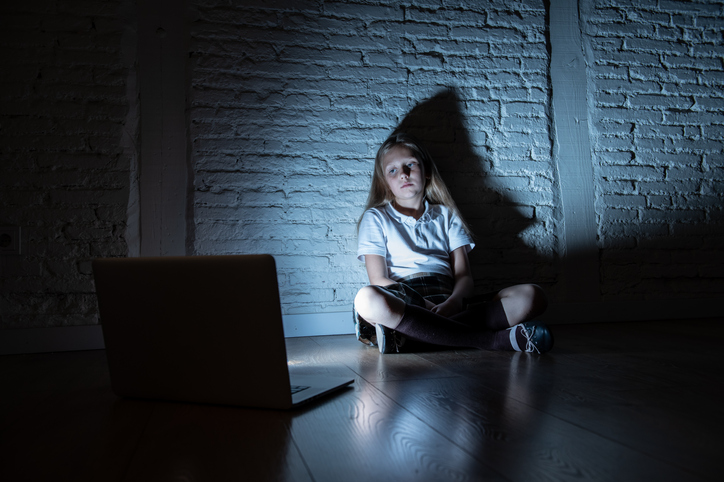
Reducing Online Harm
Through Media Literacy
Understanding a child’s life involves taking a holistic approach and having an awareness of their online presence is as important as any other information we may gather about a child. Taking a contextual safeguarding approach to better understand the risks, the preventative measures we can take, how to spot the signs of abuse and what we can do about it, will keep a child from harm.
Being proactive and regularly monitoring their digital world can keep a child safe online. Take a look at some of the strategies below to get you started.
Metaverse, VR and AI
understanding the jargon
Metaverse refers to a shared virtual space for users across the internet to access content, games, purchase or build items and environments. It is essentially an immersive version of the internet. The metaverse is built on a combination of virtual reality (VR) and augmented reality (AR) technologies – known collectively as extended reality (XR).
Virtual Reality (VR) is a digitally created experience that completely immerses the user into a simulated world. Typically, users wear a type of headset with a screen and headphones built in. They then play a game or explore a world with the use of hand controls and eye or body movements.
Artificial Intelligence or AI is fast becoming a normalised tool where users can create content, images and/or gather information.
We don't fully understand the risks and the implications for children, but some may include privacy risks, ethical bias, hacking and lack of human empathy as well as the most obvious risk to children which is the potential lack of age appropriate interaction.
To understand more about AI and how to use it more effectively, watch the two short videos below and visit Internet Matters here
Read more about the benefits and risks of immersive learning, the metaverse and how you can help children navigate this technology here
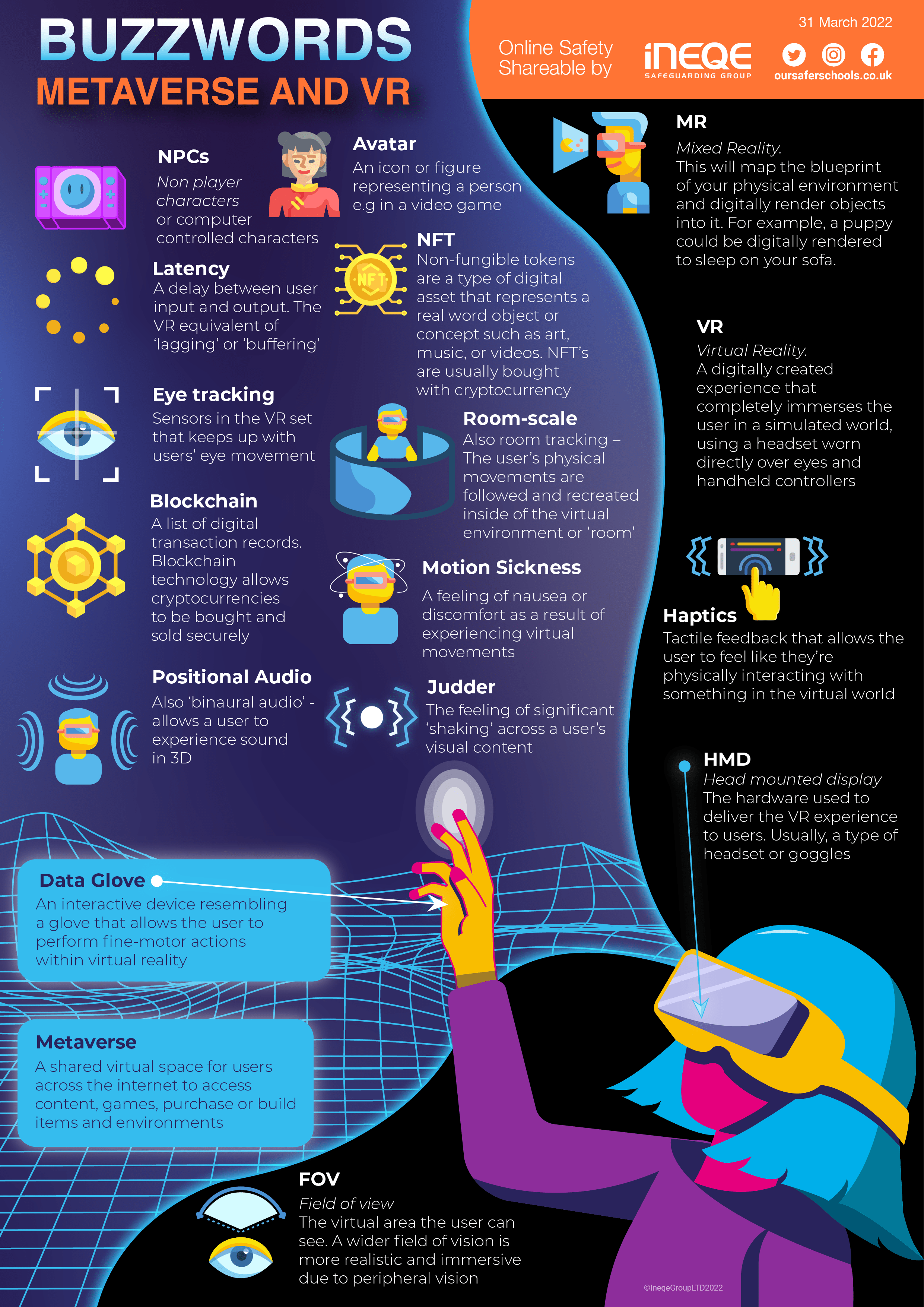
Next steps to consider
-
What to do if you suspect Online Exploitation?Show detailsKey:
Report Harmful Content!
What is harmful content and where can I report it?
The Internet Watch Foundation have built a reporting tool which can be used to remove harmful content. Visit the website to make a report and find more out more information Report Harmful Content - We Help You Remove Content
Resources
-
NWG Resource - Daniel's storyShow details10-year-old Daniel was excited for Christmas and looking forward to getting his first laptop. Very soon, Daniel became the victim of child sexual abuse. He was coerced, manipulated and abused online.
-
Internet Watch Foundation podcastShow detailsThis IWF episode explores what needs to be done to try and control the explosion in harmful AI-generated child abuse imagery and how other AI or machine-learning tools could be used to counter the phenomenon.
Listen to: AI’s power to harm and to help December 2023
-
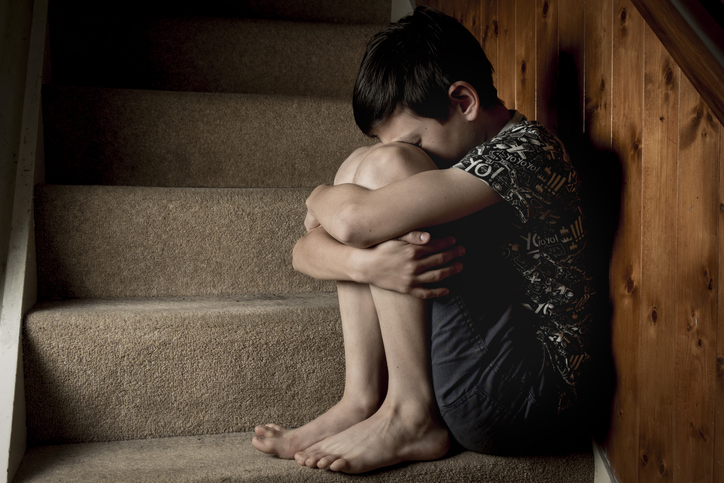 Find out moreUnder 10s groomed online ‘like never before’ as hotline discovers record amount of child sexual abuse Internet Watch Foundation
Find out moreUnder 10s groomed online ‘like never before’ as hotline discovers record amount of child sexual abuse Internet Watch Foundation
report Jan 24 -
 Find out moreNew Intimate Image Abuse Laws Come Into Effect South West Grid for Learning report Jan 24
Find out moreNew Intimate Image Abuse Laws Come Into Effect South West Grid for Learning report Jan 24
Explore these websites and keep up to date with all the latest in technology
-
Child Online ExploitationShow detailsComing Soon
To view the Child Exploitation series of One Minute Guides visit our Child Exploitation Learning and Development page and read more about online, child criminal, child trafficking, modern slavery and financial exploitation.
-
Show details
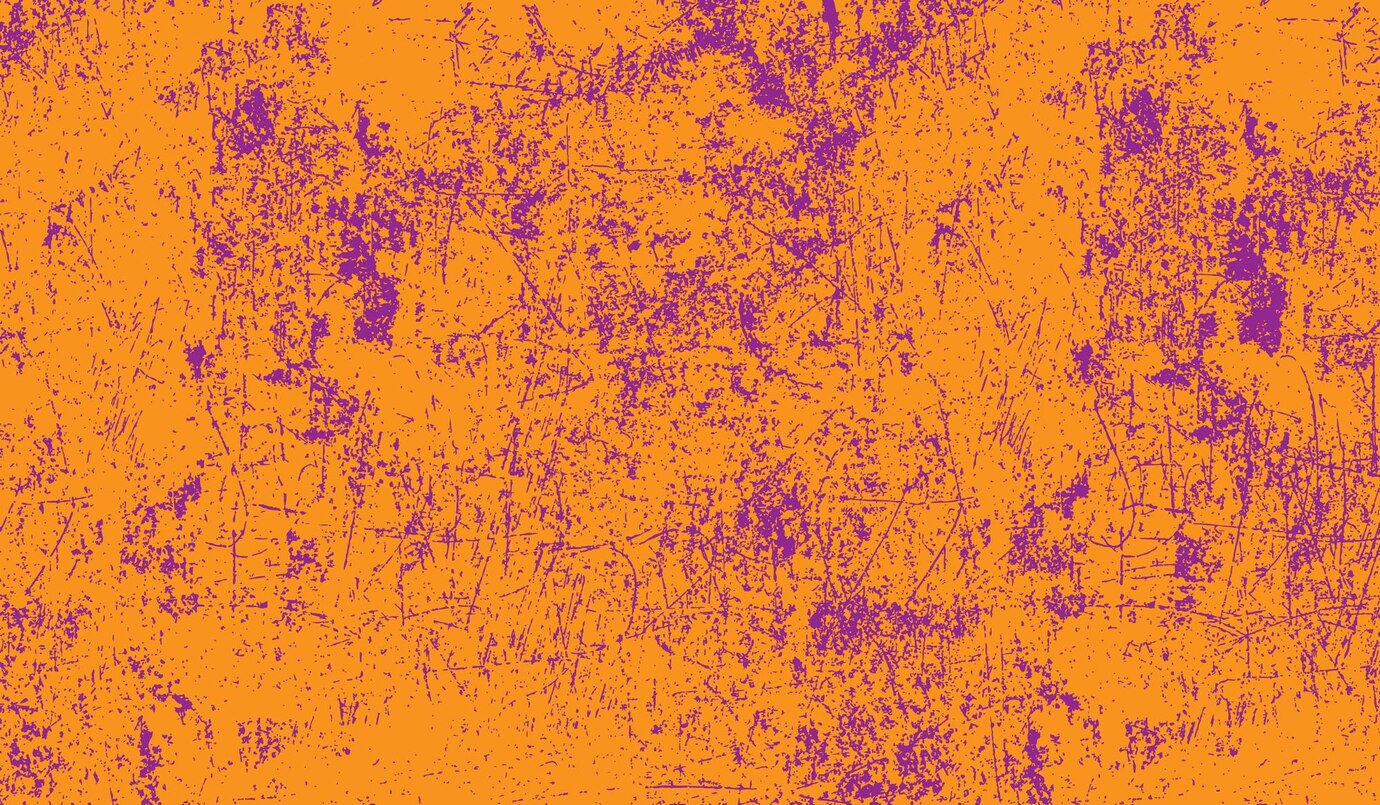 Learning & Development Access the range of Child Exploitation training, development and resources from WSCP, as well as signposting to local and national services on our Child Exploitation learning & development page.
Learning & Development Access the range of Child Exploitation training, development and resources from WSCP, as well as signposting to local and national services on our Child Exploitation learning & development page.There you will find links to current training offers, one minute guides, briefings, learning from reviews and signposting to local and national services that can help you with developing your skills and knowledge around Child Exploitation.
-
How Professional Curiosity & Challenge can help youShow detailsBeing professionally curious and challenging is essential when it comes to identifying types of child exploitation, as some may occur in isolation whilst others alongside each other. It can be difficult to distinguish what type of exploitation a child is experiencing but having a contextual safeguarding approach to your assessment will help you to identify, prevent, disrupt and stop exploitation. Risks posed to a child may vary but can be as serious as death, we must therefore ensure the correct safeguarding response is considered when a child is being abused.
To understand what is meant by professional curiosity and challenge in the district and how to adopt this approach, please click below.
Quick Links
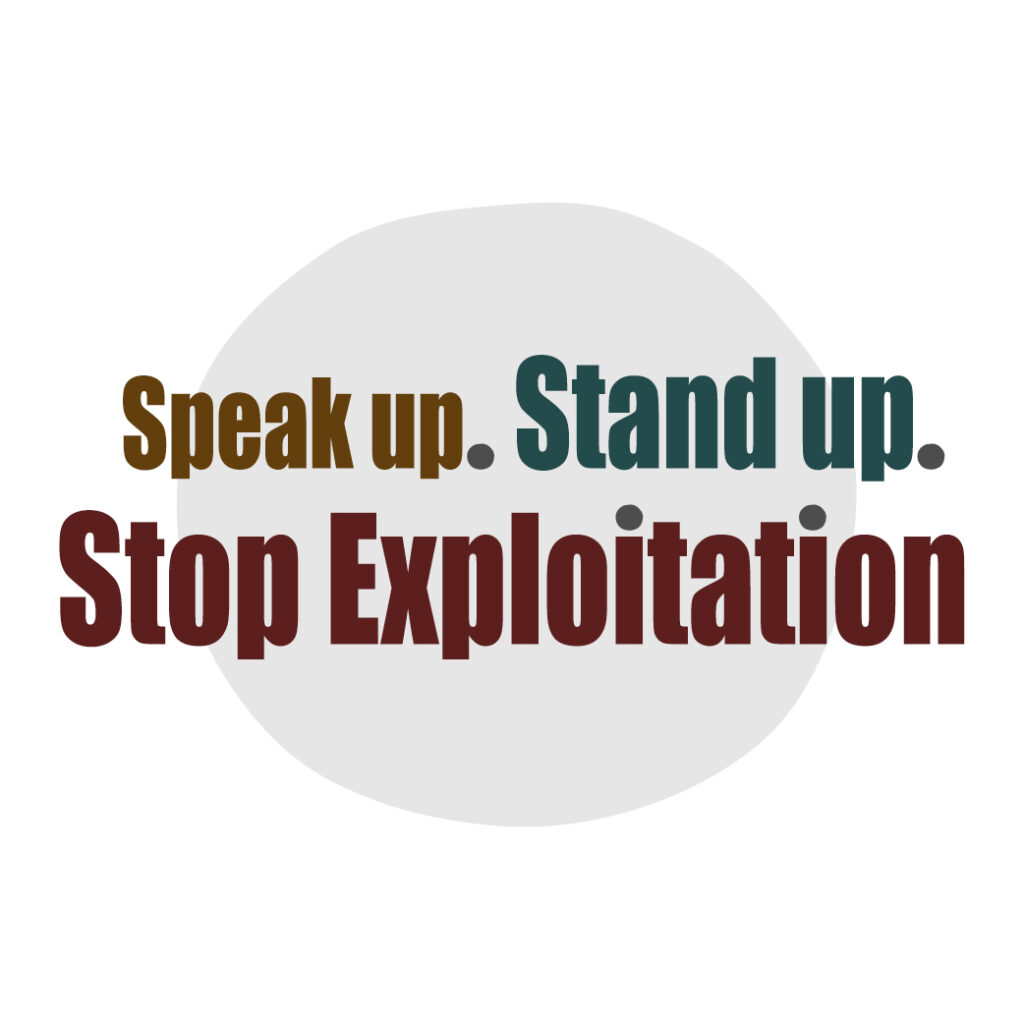
Tell me more information about the #SpeakUpStandUp campaign!

 Back to main website
Back to main website

